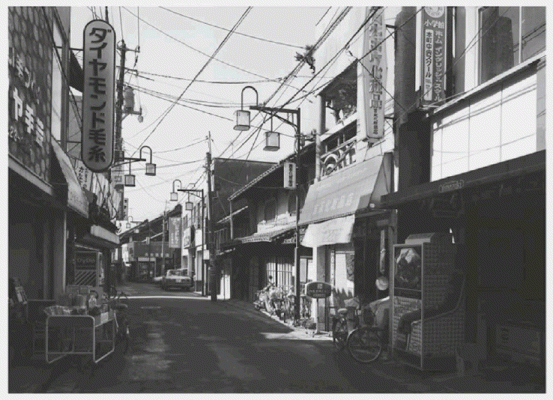The Düsseldorf School and the birth of modern photography

The Düsseldorf Photography School - frequently referred to as the "Becher School" – When it comes to matters art, it is one of the world’s most renowned schools. The school established new objective performance standards for photography art genre and served as a basis for the most prominent figures in modern photography.
The school was essential because it is known to have rehabilitated photography’s reputation as one of the essential art media. The main aim of the school was to place the art of photography on the same level as painting.
Inspiration behind the Düsseldorf School
Upon forming their partnership in 1959, the photographers Becher and Benhard markedly diverged from the works of the main German photographer at that time who was Otto Steiner. He was a supporter of a subjective approach when it came to photography. They were more influenced by an earlier German style known as Neue Sachlichkeit (New Objectivity) that began in the 1920s and included photographers like August and Karl Blossfeldt as well as Albert, who were all active during this period. Their work had a documentary-like feel to it, and it was hinged on an impartial view of all strata of the German society at all times.
Minimalism and Conceptualism
The Bechers are also known to have been influenced by the ready-made works of Marcel Duchamp from the 1910s forward, which they produced at their studio. Duchamp's everyday objects that were exhibited as pieces of art — such as a shovel, bottle neck, and urinary – gained the same level of regard as famous paintings of the time. Known for his more intellectual art approach, Duchamp had a major influence on both Minimalism and Conceptualism, among other movements.
LeWitt and Kosuth were among the artists who pioneered Conceptual Art throughout the 1960s, with the goal of removing the exterior substance and subject art matter so that they could examine the subject’s form itself.
Minimalism began as a reaction to subjectivism, and it emphasizes objective, geometric shapes and the use of neutral surfaces in contrast to subjectivism. The Bechers' aesthetic was influenced by these movements; their first book was published in tribute to Marcel Duchamp and was named Anonymous Sculptures.
Cooling Towers
The Cooling Towers picture consists of twelve images of cooling towers in the industrial sector, each of similar size, which are organized in grid-like manner, forming what was referred to by the Beechers as a 'typology' of their work. When photographed in a tableau style, with each cooling tower occupying the whole picture frame, each structure is depicted in crisp objective focus, allowing each building to be 'recognized for its distinctive qualities,' as noticed Will Martin an art critic. In a similar manner that various faces on a portraiture show could be interpreted differently by different people.
Thomas Ruff
'I don't feel we can still do portraits in the usual sense of representing a personality now,' Ruff said when he returned in 1998. 'That is the reason I like to copy portraiture.' Régis Durand an art critic, on the other hand, said that the pictures 'undermine any effort to hunt for hints that might enable one to move beyond them' because of their impersonal neutrality. So the portrait series by Ruff served as a documentation and 'typology' of an extended family of folks as well as an empty record of lifeless faces as well as bodies placed in an environment that is sterile. The viewer is invited to ponder on his desire for authenticity when it comes to photographic portraits as a result of his or her viewing of his or her image.
Thomas Struth
Thomas began his artistic career painting, studying under the great Gerhard Richter at the School. However, after becoming dissatisfied with his 'big photographic images that he felt were pointless,' he decided to devote all of his creative energy to the medium of photography. He began taking photographs in 1976 when the Bechers began offering photography classes, and his initial shots showed the desolate streets of his home town. Having partnered with the psychologist Ingo Hartmann, he produced a series of his family’s photographs between 1983 and 1984. (Family Life).
When compared to his contemporary Thomas Ruff, the approach that Struth took to portraiture is more diverse. His approach to photography was described in an interview with the Foto8 magazine in 2008 as adhering to 'a minimal number of guidelines.' They included his use of a camera with large format and solely natural light to make the best pictures, as well as the requirement that the whole family group stare directly into the lens of the camera.
He explained that: 'I normally choose a place, and then individuals can take their preferred positions on the selected stage - which is almost often the same stage where they now reside. Within that context, people have varied levels of freedom - they may dress as they feel, take positions next to whoever they want, and smile or frown at any time they choose.'
Additionally he explained how his sitters had the right to say no to a publication if they did not like it.
In a nutshell, The Düsseldorf School of Photography is an informal term that describes a group of photographers who trained at the Kunstakademie Dusseldorf in the mid-1970s under the tutelage of prominent photographers Bernd and Hiller Becher. Andreas Gursky, Candida Höfer, and the Düsseldorf School of Photography's founders, Bernd and Hilla Becher, are among the most well-known exponents of the School, who are best known for their photographs of the architecture of industrialization.
The Düsseldorf School of Photography established new standards of objective perfection for art photography and served as a basis for some of the most prominent figures in modern photography.
















